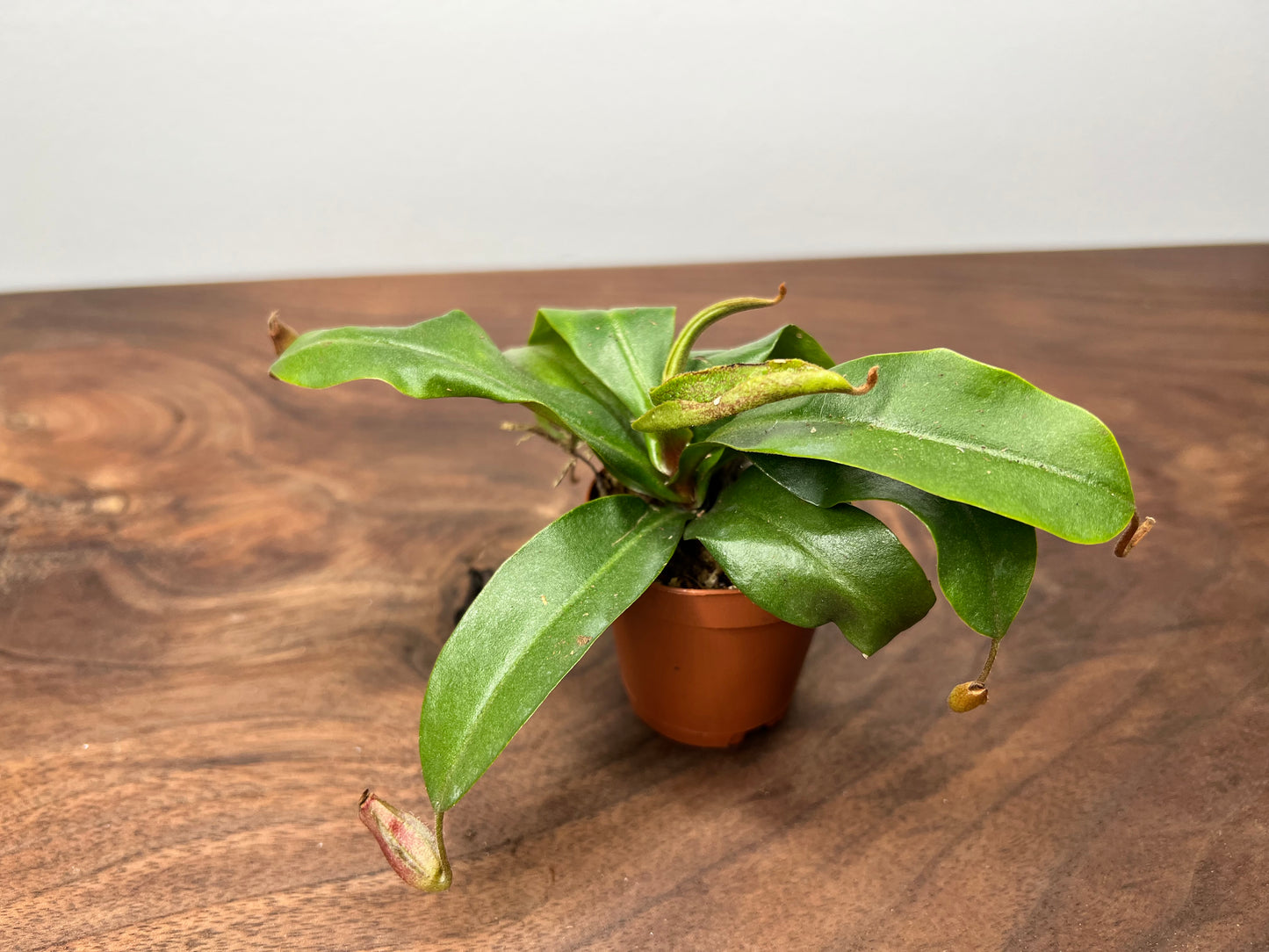The Rooted Plant Shop
Carnivorous- Nepenthes multiple species
Carnivorous- Nepenthes multiple species
Couldn't load pickup availability
Nepenthes, also known as tropical pitcher plants, is a genus of carnivorous plants native to Southeast Asia, Madagascar, and Australia. These plants are famous for their unique, pitcher-shaped leaves, which are specialized to trap and digest prey. The leaves grow into tubular structures that fill with a digestive liquid, attracting insects with sweet-smelling nectar. Once an insect lands on the slippery rim of the pitcher, it falls into the liquid below, where it is slowly broken down by digestive enzymes. Nepenthes are typically found in tropical and subtropical regions, thriving in nutrient-poor soils, where they supplement their diet with insects to acquire essential nutrients like nitrogen and phosphorus.
To care for Nepenthes, it is essential to recreate the warm, humid environment of their native habitats. They require bright, indirect sunlight, and while they do well in temperatures ranging from 70°F to 95°F. They cannot tolerate frost or extreme cold. These plants should be grown in a well-draining mix, typically consisting of sphagnum moss, perlite, and orchid bark, to mimic the acidic, low-nutrient soils they prefer. Nepenthes are sensitive to minerals in tap water, so distilled or rainwater should be used for watering. Humidity levels need to be high, around 50% to 60%, and they should be kept moist at all times. Though they can catch their own food, occasional feeding can be beneficial, especially when grown indoors where insects may be scarce.
One interesting aspect of Nepenthes is the incredible diversity within the genus. There are over 170 species of Nepenthes, with many subspecies and varieties that exhibit a wide range of forms, colors, and sizes. Some species, like Nepenthes rajah, produce large, robust pitchers that can trap prey as large as rodents, while others, like Nepenthes micramphora, are smaller and specialized in capturing tiny insects. Nepenthes pitchers vary in shape, with some being narrow and tubular, while others are more bulbous and squat. The coloration of the pitchers can range from bright greens to deep reds, with intricate patterns that attract different types of prey. The variety in pitcher shapes and trapping mechanisms is adapted to different environmental conditions, from the lowland species that thrive at lower elevations, to the montane species that live in higher, cooler climates.
One of the most popular varieties of Nepenthes for cultivation is Nepenthes x ventrata, a hybrid that combines traits from multiple species and is known for being easier to grow than pure species. Nepenthes alata is another common variety, prized for its attractive appearance and large, open pitchers. Nepenthes veitchii, with its striped or spotted pitchers, is also highly sought after for its stunning visual appeal. Some species, such as Nepenthes clipeata and Nepenthes lowii, are rare and endangered in the wild due to habitat destruction and over-collection. These species are often the focus of conservation efforts, as well as being a draw for dedicated carnivorous plant enthusiasts. The extraordinary diversity within the Nepenthes genus, along with their stunning, insect-catching ability, makes them a fascinating subject for both gardeners and botanists alike.
Share

Let customers speak for us
from 373 reviewsThe way they wrap the plant in the insulation, it creates a tube of warmth for the plant with the heat pack at the bottom.

This is so fun! I received choices on how I would get my plants! 🌱 The one that was sent was perfect along with a cactus and another cute succulent! She has helped me with so many plant issues! Thanks Mel for being an amazing small business!

Everything came beautifully packaged and in such good shape. Thank you!!

I love the way Rooted plant shop wrapped up the plants n tight so they can get here in one piece. Mel also likes to educate us on plants. She makes it really easy helps us of how to take care of the plants. Thank u very much Mel for everything u do for us bottom from my heart. I appreciate u

Shipping was so fast. The plant was so safe and secure when it arrived. Mel is so great, and so knowledge. Never had a disappointing purchase.

The rooted plant shop is impeccable. I am and will continue to be a returning customer. Seller/owner very professional and very knowledgeable in her field of plants. Packaging is packed with great care.. fast shipping as well.. and the plants are as described, healthy and gorgeous!

I bought a Dieffenbachia from Mel she’s beautiful. The third leaf is just now coming out. I can’t be more happier with her.
The Spanish moss from The Rooted Plant Shop are ABSOLUTELY STUNNING!!! Incredibly healthy and full!! So happy and can’t wait for more to be stocked!!










